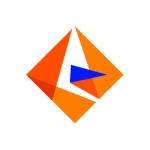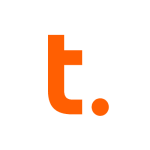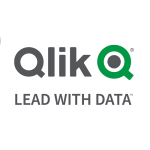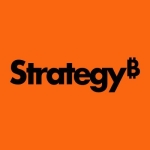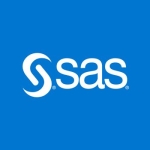What is our primary use case?
In my consulting firm, I use Tableau for data visualization and data analysis. Alongside Tableau, I also use Python and, on occasion, SPSS.
The EU had recommended Tableau for use in some of the statistics offices in Africa, including government institutes in Ghana, and just last week I was using it to do a program for the Ministry of Monitoring and Evaluation. There, I used Tableau to convey selling points to buy Tableau, which is one example of the consulting work I do for clients.
I also train others in visual analysis with the use of Tableau. This September, I trained 265 medical statisticians. Last week, I trained 13 staff from the Ministry of Monitoring and Evaluation. And soon, I'll be training another group of 20 people on Tableau.
How has it helped my organization?
Tableau is a good product for people like me who provide data analysis training because it makes my job far easier. It's a good product and very easy to use, making the introduction of key technologies extremely simple.
For instance, when you get data, and go in to analyze it, people ask, "This is numeric?" People start thinking about, "How do I get all these tools?" Tableau takes the data and automatically breaks it down into two dimensions and measures. That makes it easy for me when I'm doing training.
So what I would say to trainees is, "Don't worry about all these data types, when you are designing your questionnaire, because in Tableau it breaks them into two. And the measures are the ones that you are going to actually work on. You normally break them down by the dimensions." And that makes it simple for people to understand. Otherwise people don't know where to start when it comes to data analytics.
Tableau makes life very easy for not only myself but also for others, because you can quickly get into data analytics and visualization with it.
What is most valuable?
Tableau is easy to use. That's the first and most important thing. I not only provide consulting but I also train people to use it, so with its ease-of-use it's not as difficult for me to train executives and management staff, because they don't have the IT background, unlike when I'm using Python. They don't know anything about programming, so Python is more difficult.
Tableau is also, right from the outset, a self-service product. It's easy for anyone to understand and use. Some of the organizations that I introduce to Tableau are using the full-blown version, i.e. the commercial version, and they can very quickly start analyzing data with the use of the Ask Data feature, where you can simply drag and drop while querying for data with natural language processing. You type in English and it will pick the data and analyze it for you.
Those features are built into Tableau which makes getting started with data analysis very easy. And it's also got some pretty good built-in visualization tools. I would say Tableau is one of the best when it comes to self-service functionality.
What needs improvement?
I attended a Tableau conference recently, and a quick improvement came to mind. When I am training people how to use it, I've come across situations where I've found it difficult to explain relationships. For example, when you want to blend data or when you want to show relationships, like when linking multiple tables; well, if you're an IT guy, that's easy. But if you are not an IT guy, you don't know anything about entity relationships, and it becomes a bit difficult for others to follow along.
It takes me a long time to get people to understand, even up to the point where I feel that this is the lowest level that I can go in terms of explaining it. I realized that many people don't really have any experience or knowledge about relationships between objects, and it makes it hard for me to get my teaching across.
So I was suspecting, and I think I made this recommendation, that Tableau could find an easier way to introduce relationships. For now, if you want to build relationships in Tableau, or even in Excel, you have things like Access modules and Sheets. But how do I know that I need to use one object with another for the relationship. And if you then put in a table, what do you do after that? You have to double click, but people don't know that you have to double click.
I was hoping that there's a way that they can make that process a bit easier, though I don't know how they will do it. Perhaps when you load Tableau and connect to a data source, there would be a prompt that asks you if you want to link two tables together. So if you want to link two tables together, maybe you do A, B, C, D.
That might help with the self-service idea. If you're talking about self-service, then it should be easy for people who do not have the time, or who do not have that IT background, to pick the data and use it correctly.
In addition, and more generally, what I would like to see more support for is predictive analytics. When you're doing descriptive analysis, Tableau is excellent, and it's easy to do. But when you are trying to predict something, like in Tableau's forecasting feature, it seems to require date fields, or it won't work.
But I can forecast something without relying on date fields; maybe I want to predict that a branch has to close if it doesn't want to make something soon. I don't need dates to do that. For this reason, I'm using Alteryx for predictive modeling instead of Tableau.
Overall, the only major frustration that I have had so far is with Tableau Public. I first used Tableau Public when I was building capacity, and when there was a later release to download and you wanted to upgrade, all your work would have to be manually re-entered. I don't know how they can solve that. I was expecting that they might make a release on this upgrade, and then I can hit upgrade and it will install over what ever I have already.
Otherwise, for now I think they are doing well and I know they're still adding a lot of features. But it does sometimes make our work difficult, for those of us who are building capacity, and who are regularly changing people around. It means you have to keep learning all the time.
Another small detail for improvement is that when you draw bar charts, the default color could be something more neutral like gray. Instead, the default is blue, and I don't exactly get why this is the case.
For how long have I used the solution?
I've been using Tableau for the past three years now.
How are customer service and technical support?
I contacted support when I had a problem with data entry in 2018 or 2019. I spoke to a man based in Ireland and he was super.
I had originally put the problem I had on the Tableau community support forum, but I didn't get the right answer. I've forgotten the exact problem but it involved connecting to a data set from an Excel file. Instead of the data field displaying the data for you, what I got instead was an error or no response.
It kept happening like that so I sent a message to support, who gave me some steps to follow. I followed them but it still did not work. However, I realized that any time I do it and it shows up and I click data, it then suddenly goes off. I'm still wondering why that happened. I think it depends on the size of the file or some other reason. I have not tried it again because I'm a bit busy now but it's something that I want to go back to because support didn't give me a satisfactory answer.
They told me, "Do this." I said, "I tried it. It did not work." They asked me again to do something and I tried it, and it still did not work. But then I tried on my own, and this time when the problem came up I clicked the data interface twice to reload it. On the second time I clicked, it worked, but I don't think that is the right way to handle it.
Which solution did I use previously and why did I switch?
I used Power BI before discovering Tableau in 2016/2017.
At first I did not like Tableau, because Tableau initially put me off considering that I have a problem with how Françafrique countries, like in West Africa, are controlled by France to not buy anything from Anglophone countries. I've worked in 15 African countries. And for instance, in Ghana, we are bordered by Françafrique countries but they haven't bought things from here because France tells them, "Don't buy." Which to me is wrong. Why should you sit in Paris and dictate to Africans?
I also decided that, "Okay. I'm not going to go into any French country and work." So, for my consultancy, apart from mainly Côte d'Ivoire, I also said, "Look. It is the attitude towards Anglophone and West African countries, I'm not going to help anybody." Because my contract with the World Bank was to build capacity. So I decided I'm not going to go there.
So, when I saw Tableau first, the word itself made me think that this might be the same kind of product, and I would not even look at it, because I was against it.
I kept on using my Power BI until a colleague, another consultant who we met from South
Africa, said to me while I was demonstrating Power BI, "I think you can use Tableau." I said, "What is Tableau? I don't want it." He said, "Oh I don't know much about Tableau, but somebody told me it's easier to use than Power BI." He said, "Why don't you look at that?"
We were working on the same project and I told him, "No, I'm not interested, I will not
look at it. It's a strange product, I don't want to look at a different product." And the guy insisted, "Oh please, you must take a look at it." Because we were looking at the project like we're a team, I said, "Okay, I'll look at it."
So that evening I downloaded it and I realized that all the things that I'm doing in Power
BI, that requires some level of IT background, well, I don't need that in Tableau. So then I decided, okay, let me really look at it. Who is behind Tableau? I asked where is the name Tableau from? Where did you get that name from? Okay.
So that was the time I changed my mind towards Tableau, and to be honest with you I've not regretted anything for doing it. I'm quite happy about it.
How was the initial setup?
Setup is not that difficult for me. However, I remember in Gambia, there was some initial difficulty when I was teaching how to set up the organigram for the National Social Staff System.
In the National Social Staff System, you have about 11 ministries involved and the coordinator, and it's the coordinating agencies in Bureau of Statistics. So I needed to set up the system so that all the other ministries can enter their data. And when you enter the data, the other ministry, let's say, Ministry A can also enter data. And Ministry B cannot see what Ministry A is doing.
Now, when I was doing it, it was not difficult at all, but because I had to handle other systems and leave, I tried to explain it to them but they found it a bit hard to grasp.
So where you have multiple alliances and you set them up like organizations, it can get a bit complex. Because there's differences within the same organization under different departments. It's not a big problem when you buy Tableau for one single organization, but when you set things up for multiple organizations like the National Social Staff System, it can get problematic.
The national system is made up of different entities: Ministry of Health, Ministry of Agriculture, Ministry of Finance, etc. They are different ministries and they don't necessarily need access to all of each other's data. But if you buy Tableau for each of them then that is fine but if it comes to a situation where they all come under one number and you're setting up, you don't want one ministry to see what the other is entering.
So there was definitely a bit of a problem there. But I can't blame Tableau because no matter what it is, sometimes you need a certain level of IT skills to get certain things done.
What's my experience with pricing, setup cost, and licensing?
At $70 per month, I think the price is a bit scary. I have a small consulting firm in Ghana, working in about 15 different African countries, and when it comes to our part of the world, $70 a month is a lot of money for software.
In fact, where Tableau was approved for use in Gambia, I had the EU pay for three years. But I know it's expiring soon, and I don't think they will have the money to renew. I don't know how they're going to do it. When you come to Africa, especially when you're on the net, we don't use it so much, so I don't know if there is something that they can do about pricing for people in the African continent.
Yet recently, I trained 265 medical statisticians on how to visualize their data, using Tableau Public. They were so happy. And they thought, "Oh, this is very easy for us to do." But when they asked me about the price and I told them, they said, "$70? But we can't pay."
So that for me is a problem here. And, mostly, it's a problem for everybody. There are some companies that can easily afford it, but the majority of companies cannot.
Which other solutions did I evaluate?
I have occasionally used IBM SPSS for similar work that I perform in Tableau, but I only use it when the client absolutely requires it.
What other advice do I have?
I wouldn't tell people to go with Tableau just because it's the tool that I use. I would instead emphasize its remarkable ease-of-use and the way Tableau really listens to their users and comes up with frequent upgrades.
I would rate Tableau a nine out of ten.
Which deployment model are you using for this solution?
On-premises
Disclosure: My company has a business relationship with this vendor other than being a customer. Integrator








